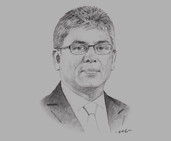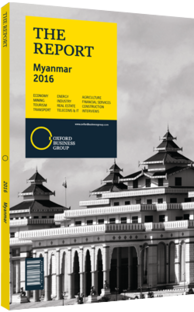Dr Gershu Paul, CEO, Pun Hlaing Hospital: Interview

Interview: Dr Gershu Paul
How would you assess the development of the health sector since the easing of sanctions?
DR GERSHU PAUL: There are indications that the changes in the political and military system in recent years have led to a positive impact on the health care sector in Myanmar. For example, life expectancy at birth for both sexes was 55 years in 1980, but in 2011 it was 65 years. There has also been an increase in child immunisation coverage, a decline in the infant mortality rate, under-five mortality rate and maternal mortality ratio. We have seen good progress, and this augers well for the future. However, the country is still at the bottom of the pyramid when we compare ourselves to other ASEAN countries, simply because we started at a much lower base. How will the country provide health care equity and health care access to all social economic segments? Around 70% of Myanmar’s population live in rural areas with minimal or literally no access to health care services, which are primarily concentrated in the big cities such as Yangon, Mandalay and Naypyitaw. Paradoxically, in the urban areas, due to the increasing rural-urban migration, the challenge is to make affordable health care.
These are key challenges that the incoming government will have to manage over the next decade. Fortunately, we are in a very unique position where Myanmar can learn from its neighbours. We have the opportunity to be realistic and pragmatic of the challenges of the health sector and the opportunity to leapfrog on all areas from policy, regulation, infrastructure investment, population based funding, service delivery, human capital and development to create national equity and access.
What should Myanmar do to achieve its health care goals and improve on its Human Development Index (HDI) metrics?
PAUL: One of the biggest challenges for health care in Myanmar is inadequate government funding. The country has the lowest health care spending in Southeast Asia. Only 2.7% of the total government budget was allocated to health care in 2014, whereas other countries in the region spend an average of 4.5% of their GDP. Health care education, early detection of diseases and access to clean water can also work together to help the country achieve its health care goals. For example, diarrhoea remains among the top five causes of death, and the incidence rate of cervical cancer in Myanmar is 2.5%, while South-east Asia’s average is 1.7%, mainly due to lack of early diagnosis. There is still a lot to do to improve the health sector in the country from both the public and private sector perspective. We need to drive the harmonisation of infrastructure systems and human capital to be on par with other top-performing ASEAN countries. We also need to have clear government policy and corporate governance in the sector, supported by effective structural changes in technology, delivery systems and processes, as well as the training and equipping of doctors, nurses and health administrative staff with the correct mind-sets and skills. Finally, critical for sustainability is the development of the health workforce human capital, particularly nursing and allied health. There are less nurses than doctors in this country in terms of the annual output which is a major problem for the government to overcome.
What role do you expect multinational corporation’s to play in the development of the country’s health sector in the coming years?
PAUL: Not only do multinationals play a key role in the development of the sector as a whole; they also have an obligation to see how they can create a realistic and affordable price point, particularly for medical devices and pharmaceutical products. I would like to see a few of the leading health care multinationals take that lead in getting involved in driving down prices and creating affordability and accessibility.
You have reached the limit of premium articles you can view for free.
Choose from the options below to purchase print or digital editions of our Reports. You can also purchase a website subscription giving you unlimited access to all of our Reports online for 12 months.
If you have already purchased this Report or have a website subscription, please login to continue.

